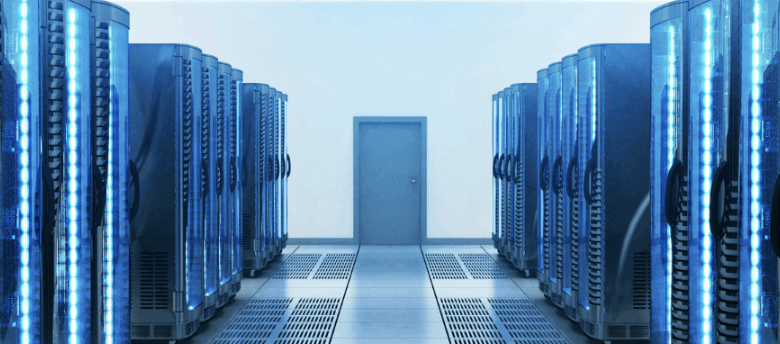
The rise of generative AI, real-time computing, and cloud-driven applications has catapulted data center demand to unprecedented levels. 90% of the world’s data has been generated in the last two years alone, creating mounting pressure on energy infrastructure. Scaling to meet this demand requires smarter, more energy efficient systems enabled by advanced power distribution systems, as well as deeper coordination on data center projects from new builds to legacy retrofits.
The shift to smarter AI data centers
Today’s most competitive digital enterprises are embedding artificial intelligence in every layer of data center infrastructure to enhance system visibility and efficiencies. These AI-fueled systems enable smarter resource use, sharper security, and scalable growth strategies that outperform conventional designs.
From predictive energy management to autonomous cooling to cybersecurity that adapts in real time, AI is fundamentally transforming data centers and the role they play in digital enterprise strategy.
Energy as a differentiator
AI-powered microgrids, battery energy storage, and dynamic load balancing are helping operators optimize energy use and reduce reliance on traditional grid capacity. AI platforms now enable data centers to self-regulate in response to pricing, peak usage, and power quality, unlocking energy resilience, sustainability, and cost efficiencies. These systems depend on precise coordination of power distribution networks and real-time responsiveness from core electrical infrastructure. The ability to anticipate demand shifts, distribute loads intelligently, and maintain seamless transitions across power sources is redefining what performance looks like at the electrical core. But achieving smarter electrical infrastructure depends on more than new solutions. It requires deep expertise to plan, source, and integrate enhanced systems and equipment.
Retrofitting legacy infrastructure
Legacy data center infrastructure wasn’t built for today’s power densities. Operators are facing the challenge of how to modernize existing assets while maintaining uptime, controlling cost, and preparing to scale. This means upgrading electrical infrastructure to handle new loads, integrating digital systems that provide real-time visibility, and rethinking facility layouts to optimize thermal performance. This level of electrical systems integration requires deep understanding of infrastructure road mapping and stakeholder management across the value chain.
Constructing for intelligence from the ground up
For greenfield builds, intelligent energy planning must be foundational. That includes selecting equipment with future-ready controls, specifying modular switchgear and battery energy storage, and planning for renewable and microgrid integration from day one. But success can’t hinge on the design and solutions alone. Ultimately, it’s about being equipped with the expertise and coordination to execute. Project delays are often caused not only by mismanaged materials, but by misaligned stakeholders and lack of field coordination.
The missing link: logistics and labor orchestration
Material availability, jobsite coordination, and skilled labor shortages continue to delay project timelines. That’s why smart logistics matter. Solutions like kitting, bundling, and phase-based staging are essential strategies to significantly reduce material handling and labor waste, keeping high-velocity projects moving.
Why integration is critical
Power distribution system integration is another universal challenge across data center builds, whether they start from the ground up or are updates to existing infrastructure. Systems must perform seamlessly across multiple OEMs, across IT and OT layers, and across power, cooling, and digital infrastructure. Achieving this requires an experienced electrical systems solutions provider and integrator with the expertise to install and coordinate technologies as well as the breadth to work across EPCs, OEMs, and other stakeholders.
The takeaway
AI-fueled smart data centers start with smarter electrical infrastructure. The most resilient operations begin with systems that are planned, sourced, integrated, and staged by electrical systems integrator partners who understand how every component—and every team across the value chain—connects. In a world where AI defines the future, smarter electrical systems and enhanced equipment plus seamless integration defines who gets there first.
About the author
Luis Valls is Co-CEO of Turtle, a fourth-generation, independent electrical systems integrator leading in electrical and industrial distribution and smart infrastructure solutions that delivers intelligent infrastructure for mission-critical facilities. With over 20 years of experience in energy systems design, construction logistics, and operational strategy, he leads Turtle’s efforts to help clients scale faster, build smarter, and operate with resilience.





